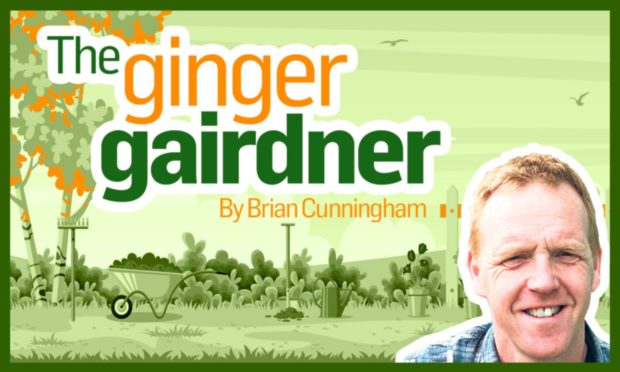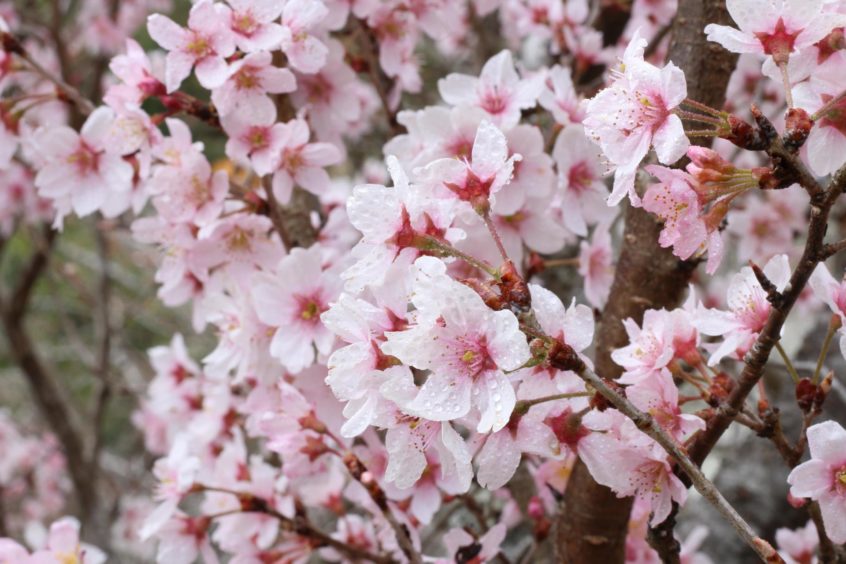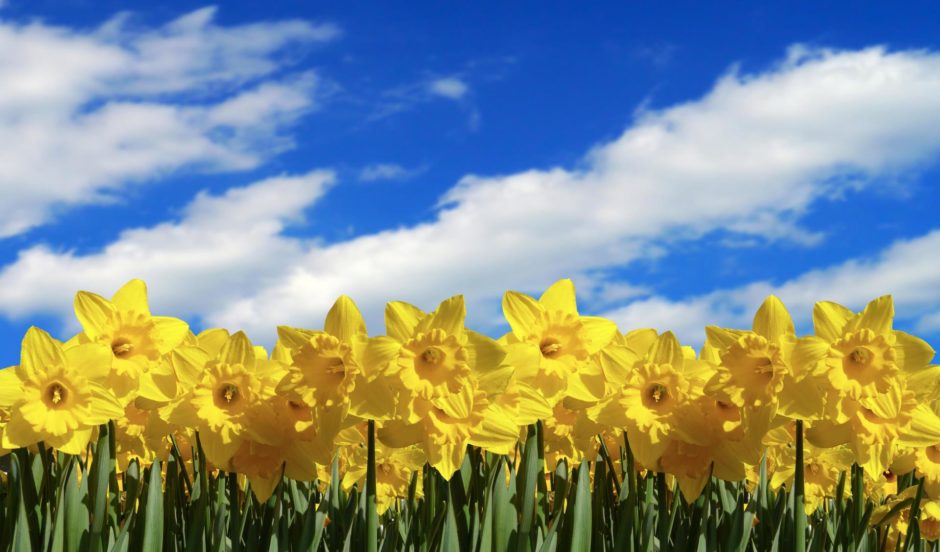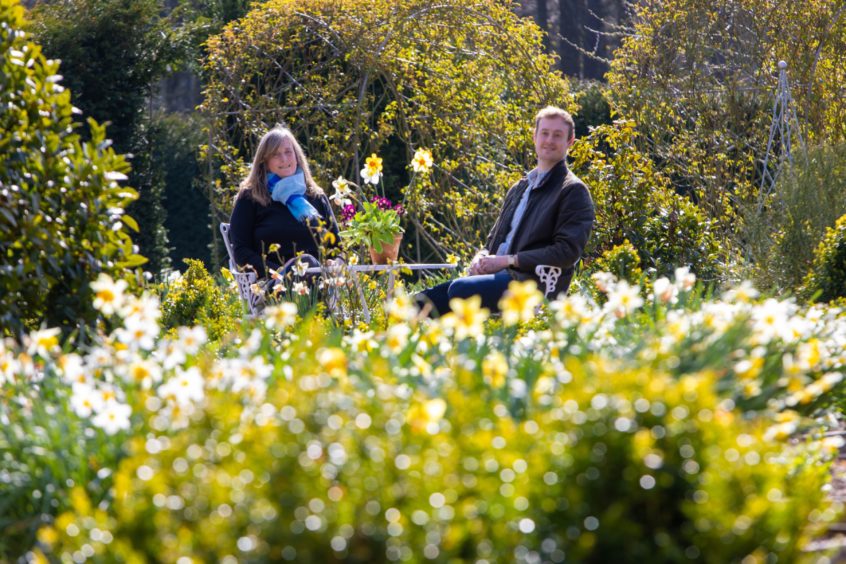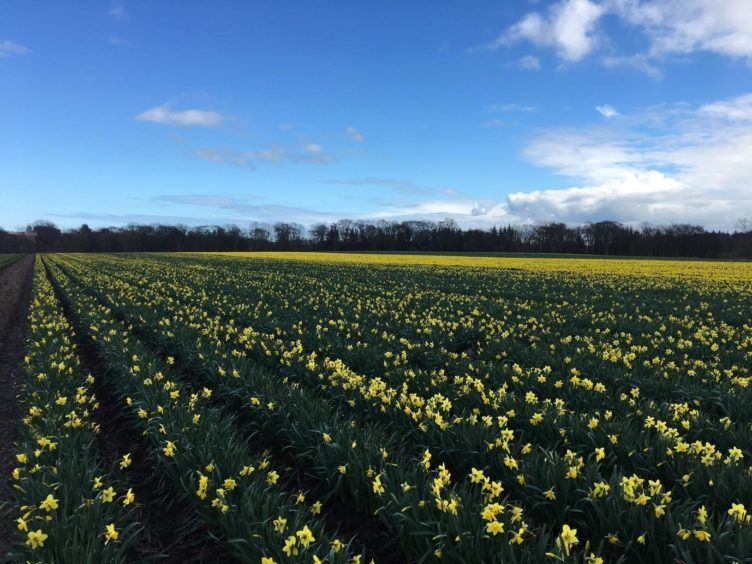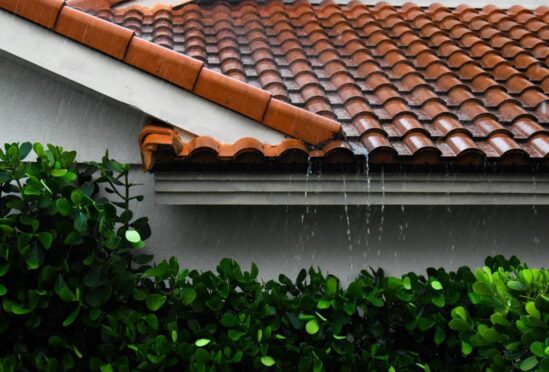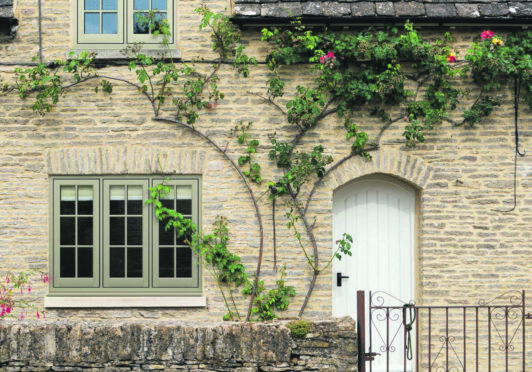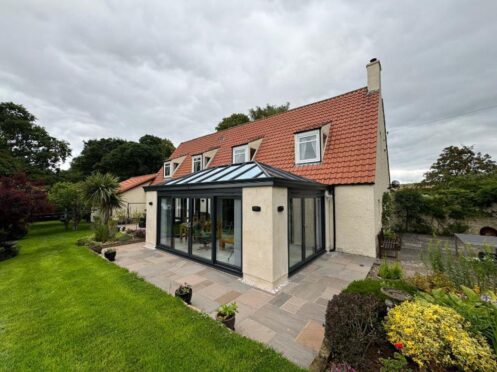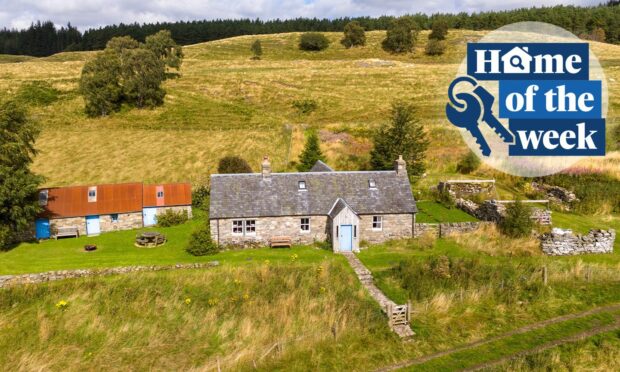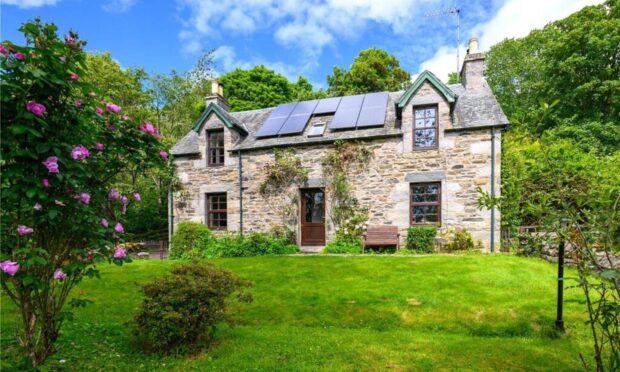Thanks to Mother Nature we can never exactly predict the time when a plant is going to flower, the date of which never really being the same two years running.
Last year I can recall when filming the opening programme of the new Beechgrove series highlighting one of my favourite plants, a flowering cherry called Prunus incisa ‘Kojo-no-mai’. It had just come into bloom that second weekend of April yet on the same date this year was already two weeks into its magnificent display.
This surprised me considering we had such a long, cold winter where if anything I would have expected them to be flowering later.
Incidentally if you are looking for a value for money shrub then this is right up there as one of my ‘top-ten plants for the tight Scotsman’ having fascinating zig-zagging branches, producing masses of white flowers in early spring and orange coloured foliage in autumn. That’s three features of interest all for the price of one plant!
I felt it was the same for daffodils too this spring, where far more were in flower the week of the lockdown anniversary than last year, when I was sending pictures back to the gardens team who were missing out on the display as they had to stay at home.
No matter the timing the familiar sight of golden coloured daffodils brightening up our parks and gardens is the sure signal for me that winter is over and spring is here.
The daffodil or Lent Lily’s botanical name is Narcissus, from an Ancient Greek myth in honour of a handsome youth who fell in love with his own reflection in a pool, becoming so entranced he fell in and drowned. The nodding head of the wild daffodil symbolising Narcissus bending over the water.
Not being a strong swimmer myself his fate is one I am not keen to replicate, intending instead to admire safely the way they brighten up our spring gardens outdoors or when picking a bunch to have in a vase indoors.
Daffodil bulbs should be planted in autumn and, being so firm and sturdy, it makes this is a prefect activity for getting any young gardeners in your life to help you. I can still see my wee boy in his wellies and dungarees barely three years old, coming round with me and helping pop them into the planting hole I had created in the lawn with a bulb planter.
Whether you grow daffodils in containers, a border or naturalise them in grass, don’t be too hasty to tidy up by cutting away the foliage for a good six weeks after they have finished flowering.
Not only was he so happy when he saw what the result the following spring, this and every one going forward will warm my heart when I recall this special time I was lucky to have with him every year when I see them in bloom.
Whether you grow them in containers, a border or naturalise them in grass, don’t be too hasty to tidy up by cutting away the foliage for a good six weeks after they have finished flowering. The bulb needs this time to produce and store the energy required for flowering next year. One trick you could do to assist this is to remove the blooms once the flowers have faded is a spot of deadheading, where none of these resources will be diverted towards forming seed.
Scotland’s Daffodil Festival has been established at the Backhouse Rossie Estate in Fife where owners Caroline and Andrew Thomson have created a unique National Collection of rare daffodils bred over three generations of the Backhouse family between the mid 1800’s and mid 1900’s by Caroline’s descendants.
A visit to the gardens and historic walled garden is a must at any time but especially when the daffodils are in full show, though with all gardens please check websites for opening times and any Covid restrictions.
Due to Covid, they also have a programme of talks over the weekend of April 17- 18, given by experts and enthusiasts which can be accessed online.
I’d always associated the Netherlands with the mass production of bulbs yet our own Grampian Growers working on the fertile lands of the east coast of Scotland produce daffodils for the cut flower market in spring and the bulbs for autumn planting.
You may have noticed white and golden fields either side of the dual carriageway around Montrose and I’ve also noticed the same in Perthshire where a group of 13 members have come together to diversify into this farmer owned cooperative.
One daffodil garden I had been hoping to visit this spring was the National Trust property Brodie Castle up on the Moray coast. Major Ian Brodie the 24th Laird absolutely loved this plant, during 1899 and 1942 he raised tens of thousands of daffodils in the walled garden there but only around 400 were to meet his high standards as named cultivars.
Every spring the grounds surrounding the castle feature a magnificent display of which 116 of the cultivars he bred can be seen as part of another National Collection of over 200 named heritage varieties.
I love learning all the hidden stories behind plants but sometimes all that’s needed is to look no further than the pure simplicity that the joy a daffodil display can bring.
